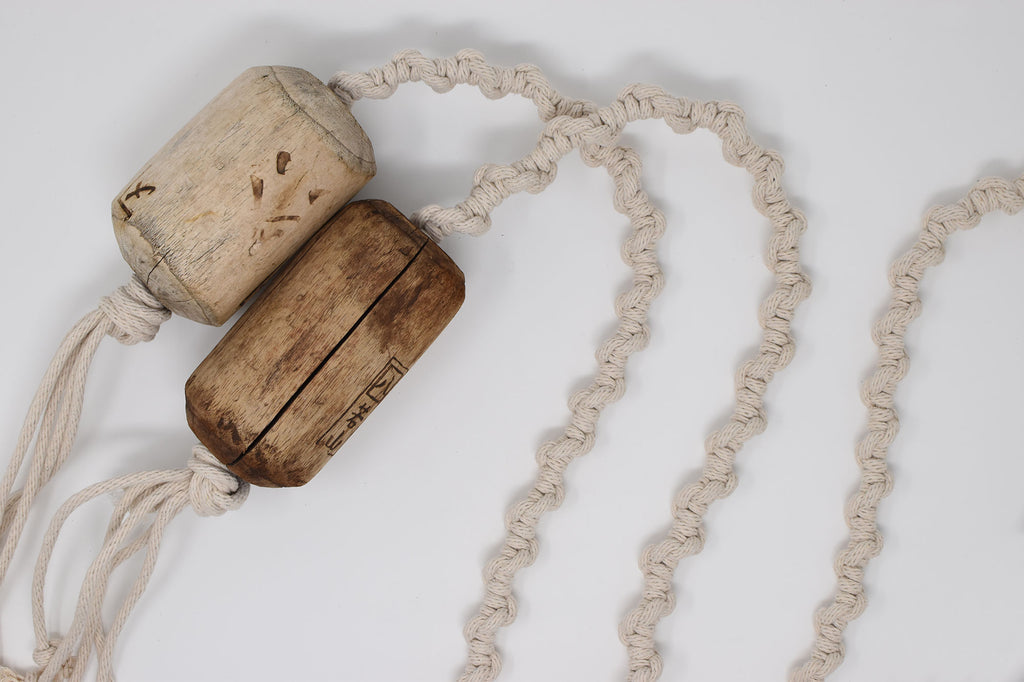Moo-Young does Macramé

This week in the Concept Shop: Macramé. You might have noticed the resurgence of this splendidly diy macramè 70’s braided rope craft whether in the nearest West Elm or your nana’s living room. Many of us might have even dabbled in the craft as kids, unknowingly tying knots and lanyards and attaching puka shells to make friendship bracelets. Little did we know back then, this craft has a rich history that spans long before your childhood memories and continues to evolve, most recently unravelling onto today's style blogs.
The origins of Macramé can be traced back to 13th-century Arab weavers. Although functional knot tying has been around as long has humans have existed, Arab artisans began decoratively tying excess yarn or thread at the end of towels, carpets and other loom-woven materials. A few centuries later, macramé made its way to Italy and France where it was picked up by sailors. Knot-tying became a popular pass-time on the open water as sailors developed new tying techniques for both practical and decorative purposes. The sailors would barter this knot-knowledge once on shore, hence spreading macramé rapidly, even making its way to China.
The art fell out of popularity for a few decades until the 70’s, and it had a booming renaissance. Macramé was seen on everything from the runway to interior design magazines, and creative-knotting was no longer niche.
Like most fads, macramé dropped off the scene after almost a decade of being in the spotlight and all those woven plant hangers and wall hangs went into hiding in our collective grandparents’ closets. Until now.
The practice of decorative knot-tying has found its way into the public eye once again, and also into our shop! One of our makers, Louise, has been busy fashioning a macramé rope to hang from the doorways of our Concept Shop. The knot used is the "spiral staircase" - an old favorite from the friendship bracelet days and a basic macramè knot found on most knot tutorials. As always, we're guided by where the material takes us. As we worked, we realized we needed a weight to anchor the rope in the center of the design. On a whim, we picked up a small antique Japanese buoy from our collection (they've been a back-burner concept for years). Lo and behold, the shoe fit. After using the buoy to weigh down the rope, we decided to leave it on as the final touch, both literally and figuratively tying the design together. It was the perfect marriage of form and function. Visit us at Chophouse Row to see for yourself - you might even be lucky enough to catch us tying rope!
